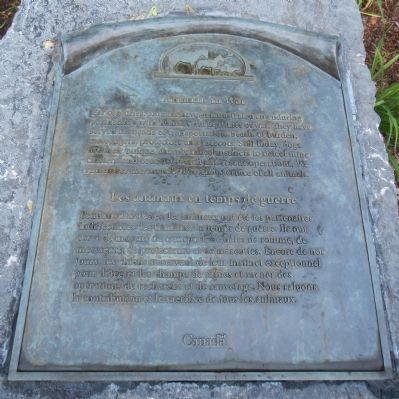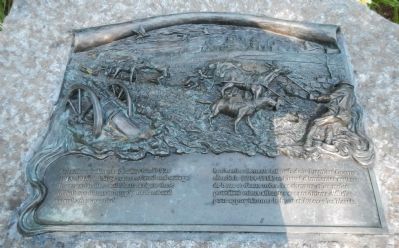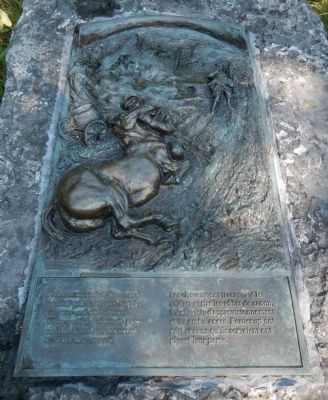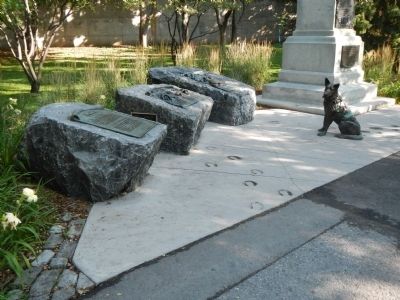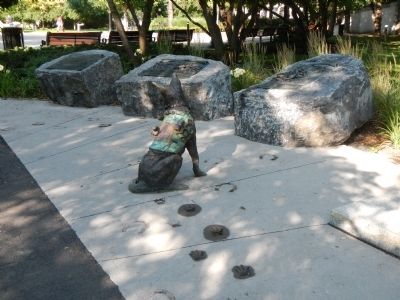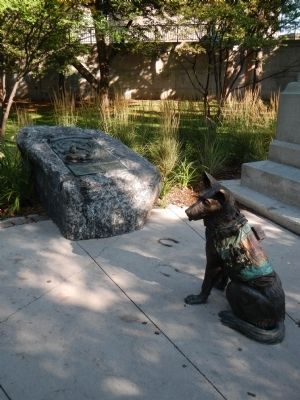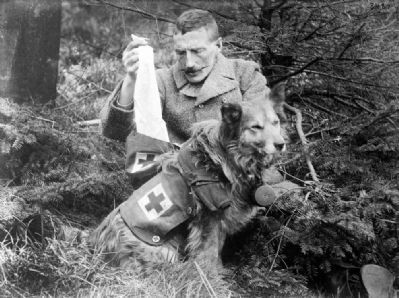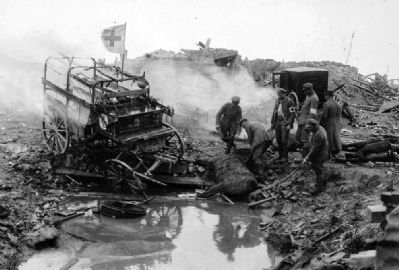Downtown Ottawa , Ontario — Central Canada (North America)
Animals in War
Les animaux en temps de guerre
plaque 1:
English:
For centuries, animals have demonstrated an enduring partnership with humans during times of war. They have served as means of transportation, beast of burden, messengers, protectors and mascots. Still today, dogs use their unique, sharply tuned instincts to detect mine clusters, and conduct search and rescue operations. We remember the contribution and sacrifice of all animals.
Pendant des siècles, les animaux ont été les partenaires indéfectibles des humains en temps de guerre. Ils ont servi de moyens de transport de bêtes de somme, de messagers, de protecteurs,et de mascottes. Encore de nous jours, les chiens se servant de leur instinct exceptionnel pour détecter les champs de mines et mener des opérations de recherche et de sauvetage. Nous saluons la contribution et le sacrifice de tous les animaux.
English:
Relentless shelling in the First World War (1914-1918) left huge craters of mud and sewage. Horses and mules could best navigate these difficulties conditions to supply the front and evacuate the wounded.
Les bombardements intensifs de la Première Guerre mondiale (1914-1918) ont laissé d’immense cratères de boue et d’eaux usées . Les chevaux et les mules pouvaient mieux affronter ces conditions difficiles pour approvisionner le front et évacuer les blessés.
English:
Horses carried soldiers and pulled gun carriages, supply wagons and ambulances. Many paid the ultimate price and their loss was mourned by those they served.
Les chevaux ont transporté les soldats et tiré les affûte de canon, les chariots d’approvisionnement et les ambulances. Beaucoup ont péri et ceux qu’ils servaient ont pleuré leur perte.
Topics. This memorial is listed in these topic lists: Animals • War, World I.
Location. 45° 25.337′ N, 75° 41.539′ W. Marker is in Ottawa, Ontario. It is in Downtown Ottawa. Memorial is on Elgin Street close to Slater Street, on the right when traveling north. Touch for map. Marker is at or near this postal address: 101 Elgin Street, Ottawa ON K1P 5J2, Canada. Touch for directions.
Other nearby markers. At least 8 other markers are within walking distance of this marker. South African (Boer) War Memorial (here, next to this marker); Canadian Airmen Lost Over Poland (within shouting distance of this marker); Oscar Peterson (about 150 meters away, measured in a direct line); Marion Dewar Plaza (about 180 meters away); Brigadier Andrew Hamilton Gault DSO, OBE, ED, CD. (approx. 0.2 kilometers away); The National War Memorial (approx. 0.3 kilometers away); The Rideau Canal (approx. 0.3 kilometers away); Rail Heritage in the Capital (approx. 0.3 kilometers away). Touch for a list and map of all markers in Ottawa.
More about this marker. This memorial is located in Confederation Park.
Also see . . .
1. Dogs in World War One - History Learning Site. Dogs had a vital part to play in World War One as the complexes of trenches spread throughout the Western Front. It is estimated that by 1918, Germany had employed 30,000 dogs, Britain, France and Belgian over 20,000 and Italy 3000. America, at first, did not use dogs except to utilise a few hundred from the Allies for specific missions. Later, after a chance stowaway, the USA produced the most decorated and highly-ranked service dog in military history, Sergeant Stubby. (Submitted on April 8, 2015, by Barry Swackhamer of Brentwood, California.)
2. World War I in Photos: Animals at War - The Atlantic. (Submitted on April 8, 2015, by Barry Swackhamer of Brentwood, California.)
Credits. This page was last revised on May 12, 2022. It was originally submitted on April 8, 2015, by Barry Swackhamer of Brentwood, California. This page has been viewed 444 times since then and 10 times this year. Last updated on April 19, 2022, by Robert Rusaw of Massena, New York. Photos: 1, 2, 3, 4, 5, 6, 7, 8. submitted on April 8, 2015, by Barry Swackhamer of Brentwood, California. • J. Makali Bruton was the editor who published this page.
